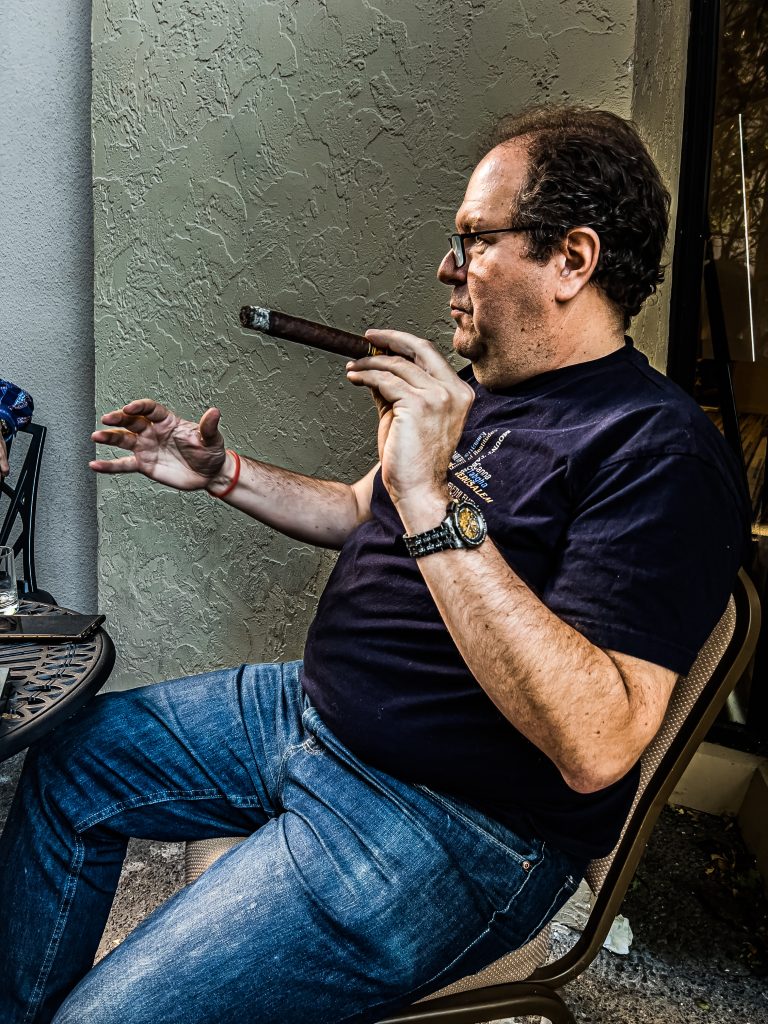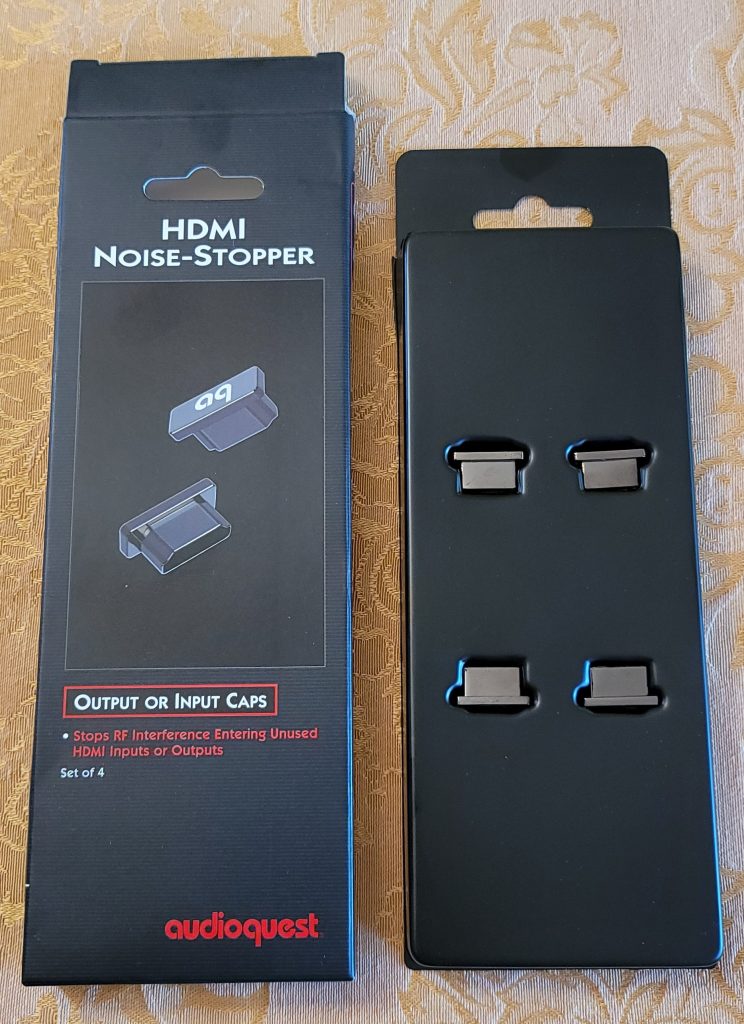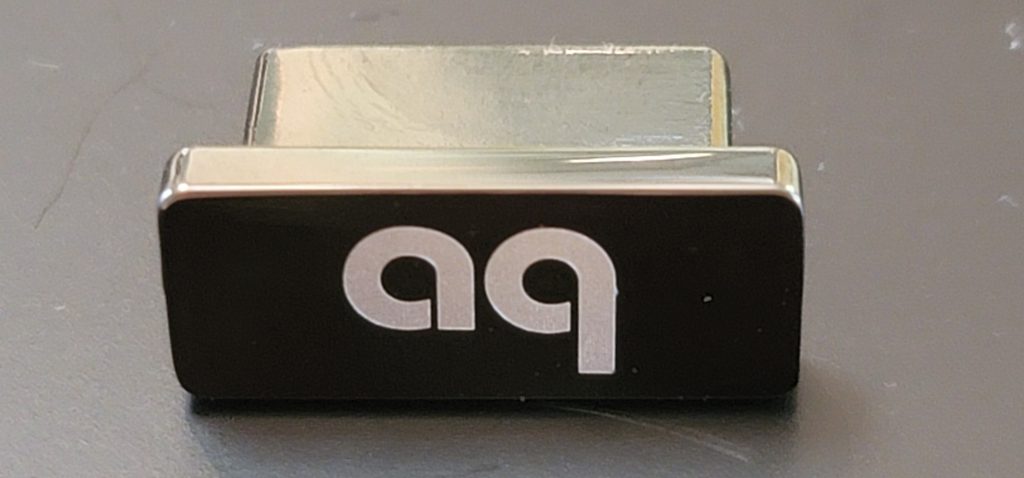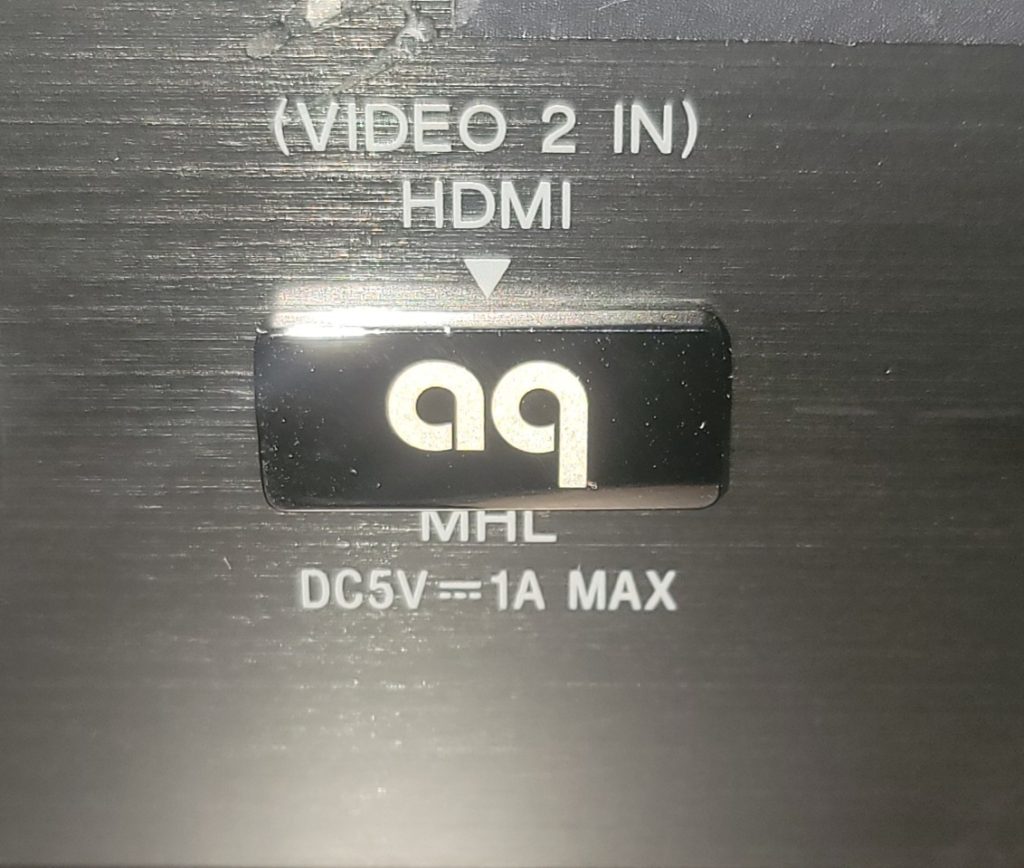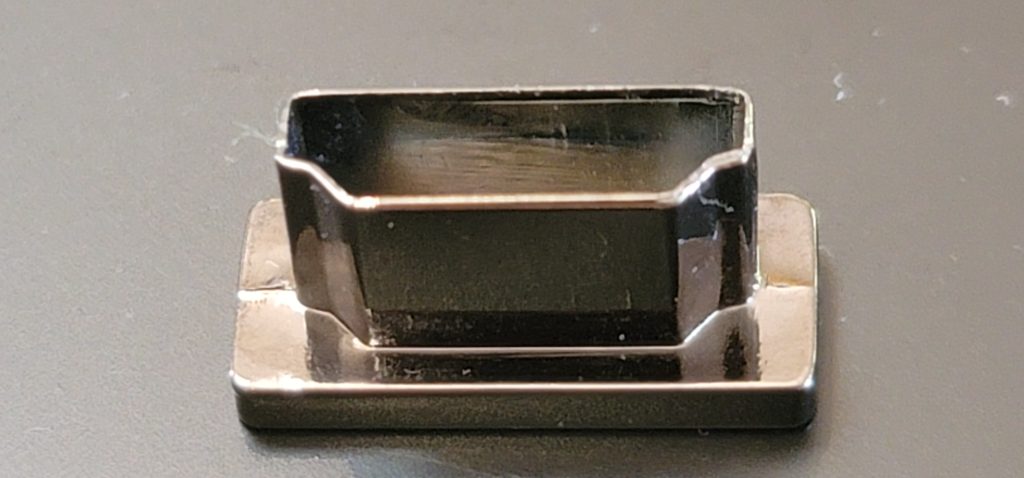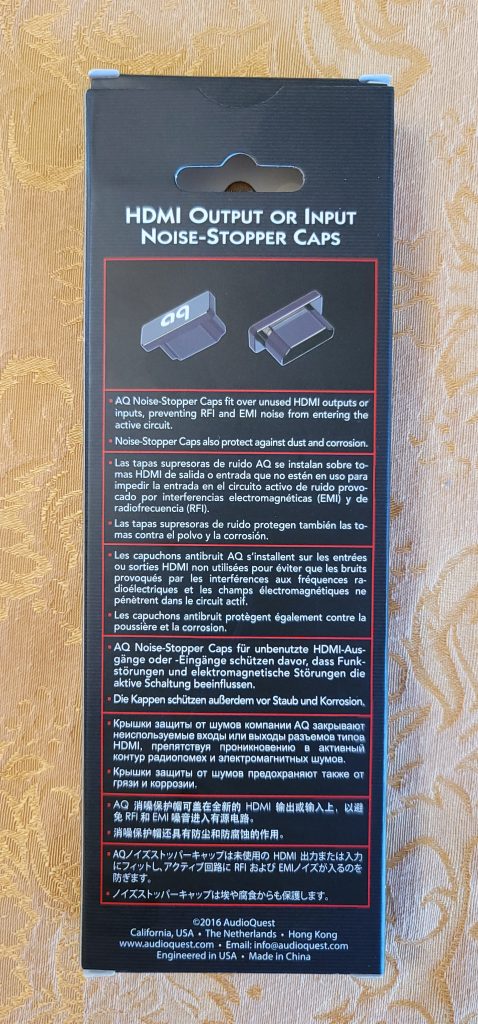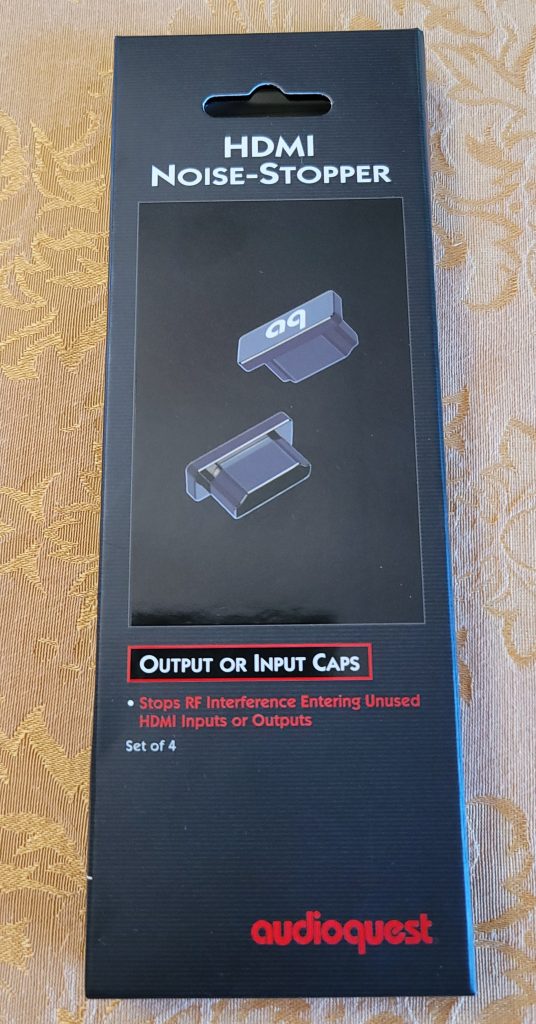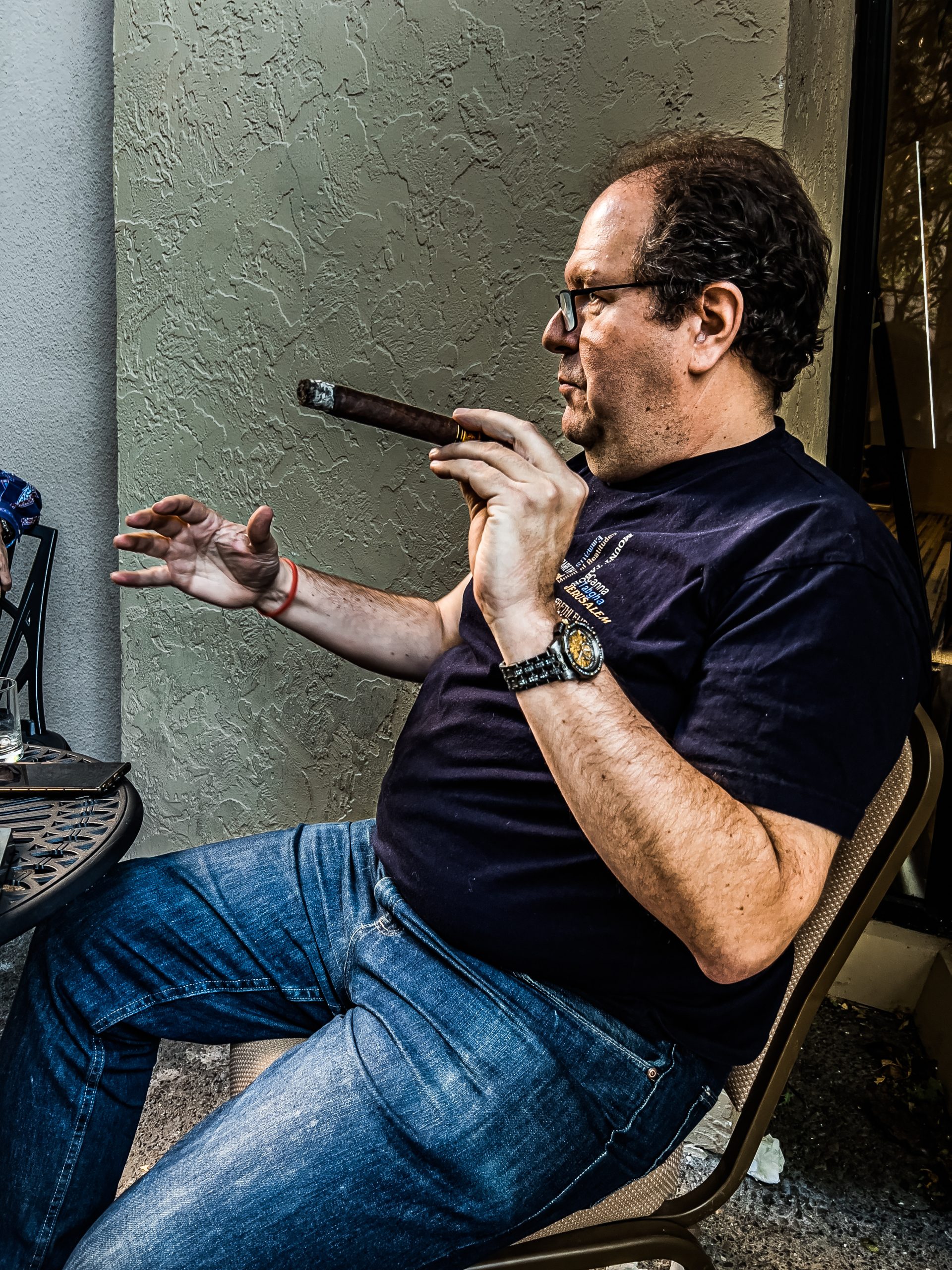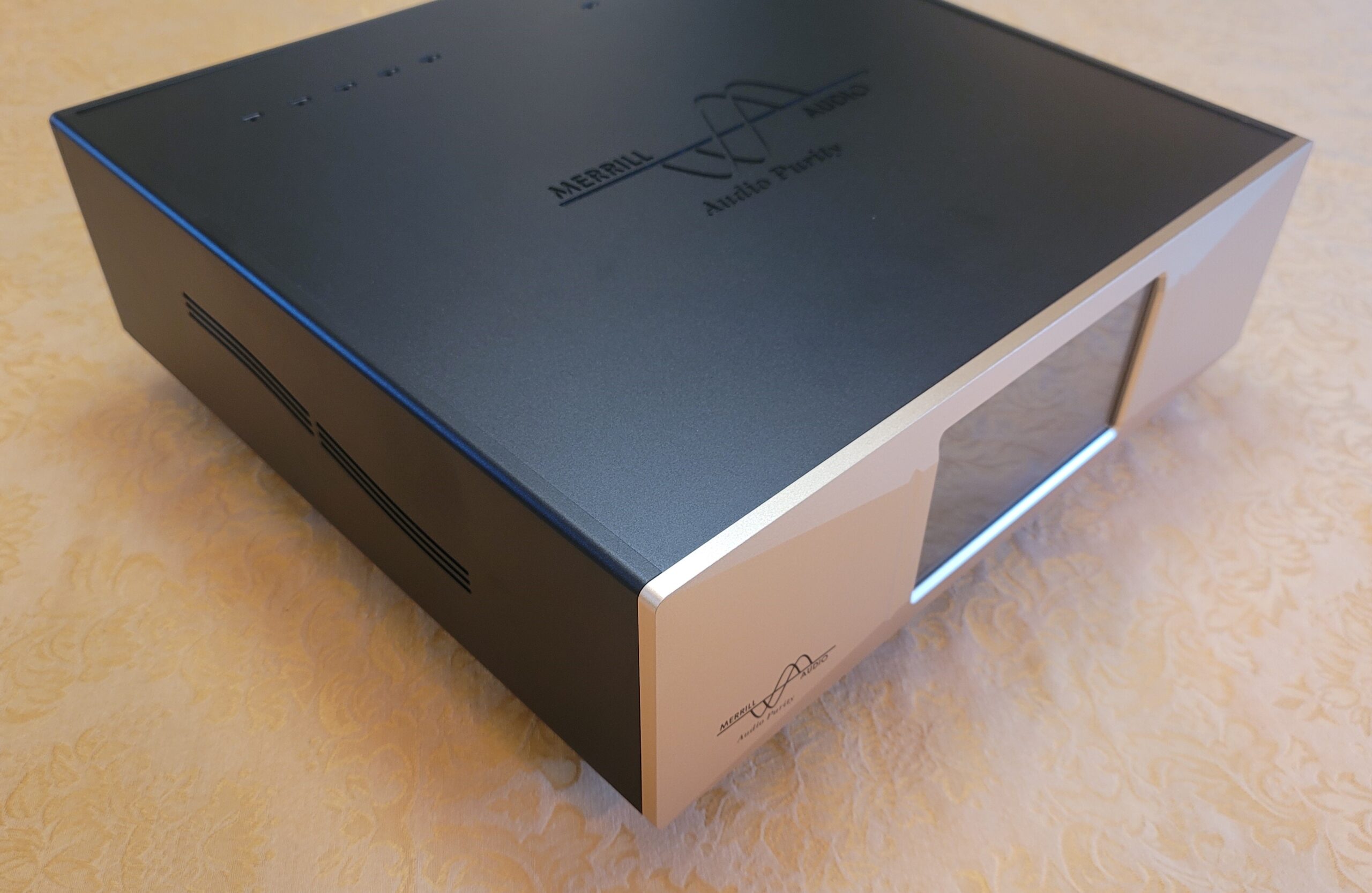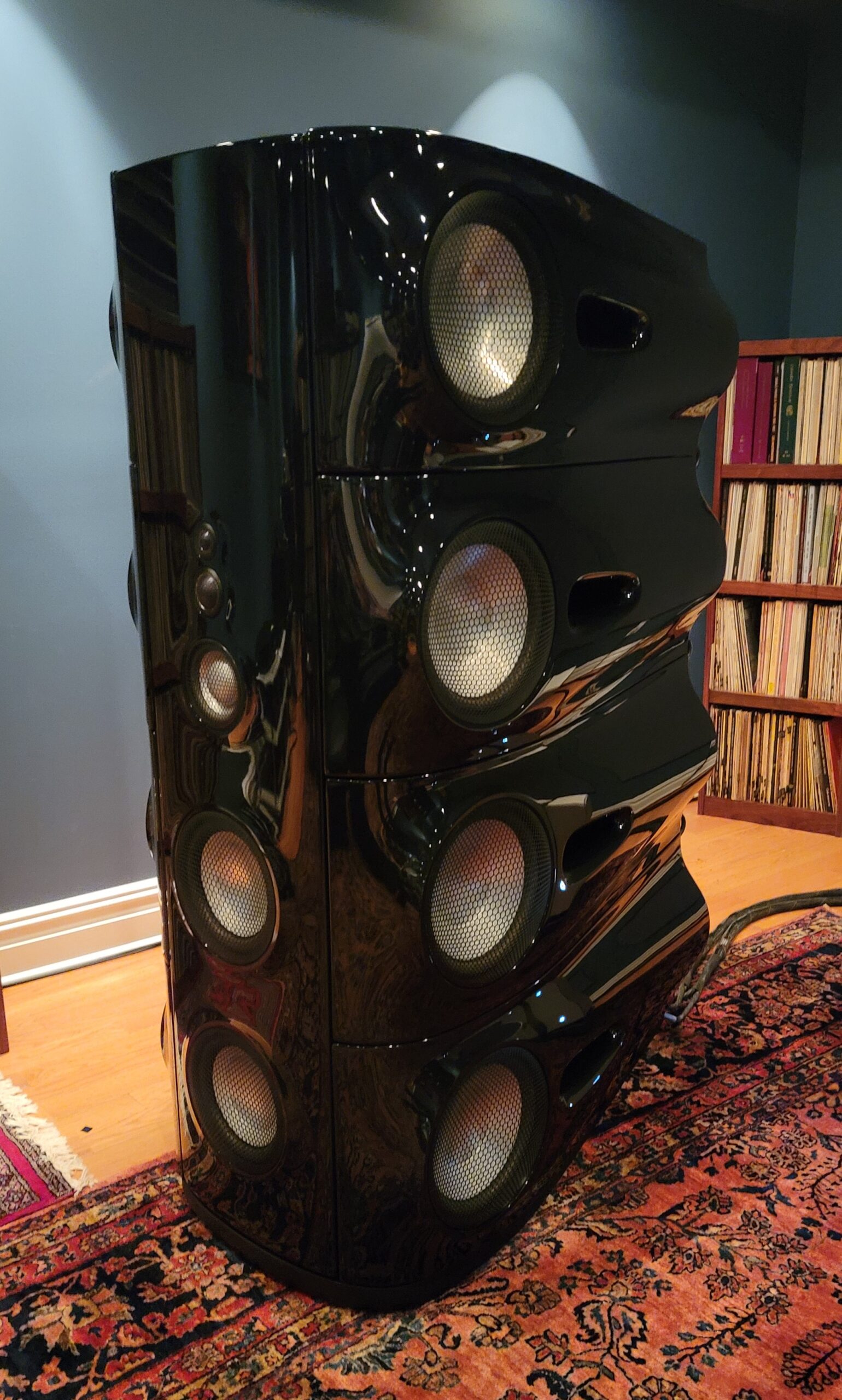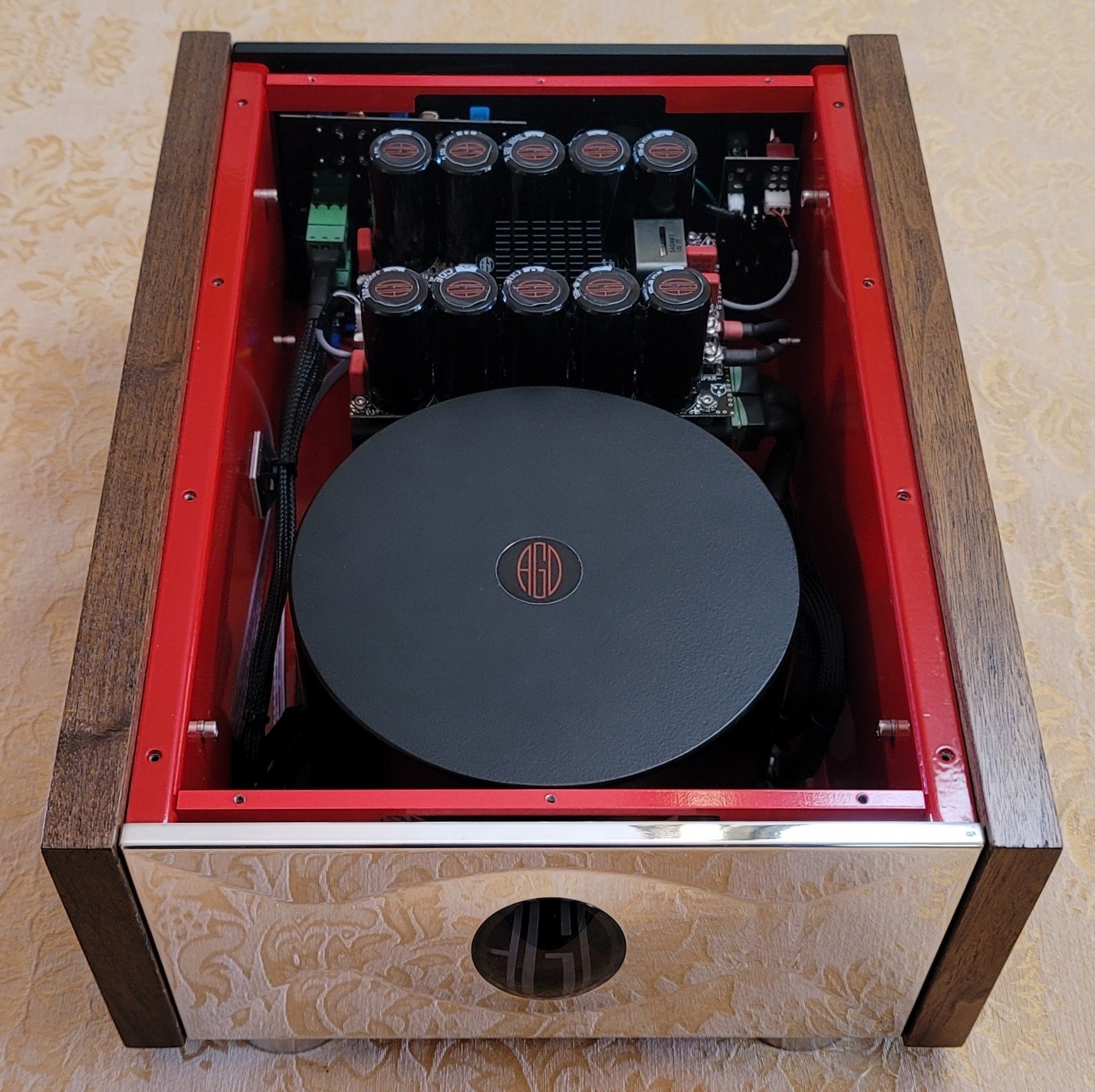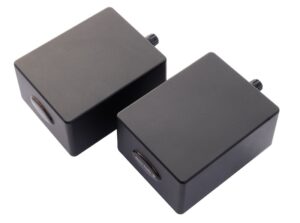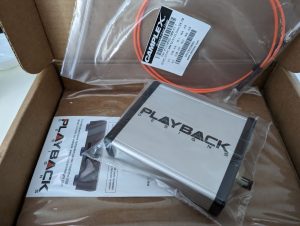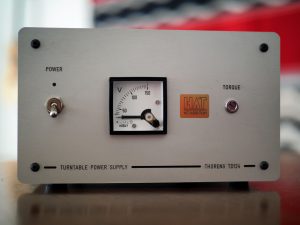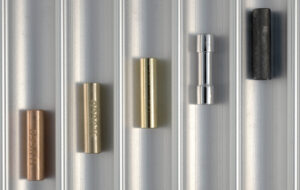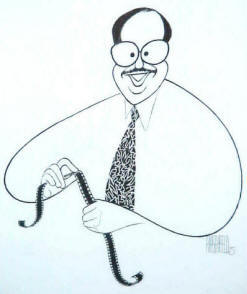Dean Waters at PAF 2023 (photograph and image processing by David W. Robinson)
Here's a neat little product that aims to solve not one, but two challenges we face in our setups. The HDMI Noise-Stopper plugs from AudioQuest are metallic 'blanks' that are designed to fit over any unused HDMI ports. The primary objective here is to reduce or eliminate any ambient RF interference or EMI from entering the system by way of an exposed port.
As audio enthusiasts we spend considerable time and attention to reducing as much RF and EMI as possible. And yet our listening environments are the noisiest places in our entire homes! We've got amps, rectifiers, DACs, transports, filters, capacitors, transistors, transformers, converters, turntable motors—you name it. Not to mention the maze of power and signal cables we have running all over the place. Add to that the 2.4GHz, 5GHz, and soon to be 6GHz WiFi networks. Plus, all the Bluetooth and ZigBee 'smart' devices that run our domiciles. Enough already! Every exposed port lives in a virtual sea of noise. Hence the creation of the AudioQuest HDMI noise-stoppers.
This is one of those things that you simply set-and-forget. Or rather plug-in and forget. Will it make a massive difference in what you hear? That depends on how much noise you have in your environment and how much resolution and clarity your system can provide. This will become more important as we move into higher bandwidth connections, such as our eventual transition to 8k/60p video with full Atmos sound processing. 8k/60p (& 4k/120p) take a massive 48 Gb/s in bandwidth. All of that crammed into a connector about the size of your thumb. As bandwidth and sensitivity rise, so does the need for RF & EMI shielding and protection.
There is a second benefit to these noise-stoppers: Dust. We've all been there. We finally decide to upgrade a component in our system that will connect to our processor/amp/DAC that hasn't been moved out the cabinet since Obama's first term. Looking at the back of our system, we see years of dirt, dust, cobwebs, and an old sock stuck back in the corner (how'd that get there?).
It's easy to see which RCA inputs were connected and which ones were never used. The RCA's that had cables plugged in are nice and shiny while the RCA ports that were never used look like a corroded shipwreck. With exposed ports like RCA it's not much on an issue. A damp micro-fiber towel and a small amount of elbow grease and the exposed connectors are as clean as new. But what about the inside-facing ports? Fiber Toslink ports have the little plastic shutter that keeps the dust out. Nothing of the sort for HDMI. Those ports are going to collect dust and grime just the same as any other open port.
Except an HDMI port has 19 total connection pins instead of just two with RCA. And you can't readily clean them.
In the back of your mind, you just know that anything you plug in to a long-exposed unused HDMI port won't have the same clean connection as an HDMI port that has been shielded from dust and dirt by having cables plugged into them since new.
Of all the upgrades available, this is likely the easiest and simplest. And very likely the fastest and least expensive one at that. They sell for just under $30 for a pack of 4 on Amazon. AudioQuest Noise-Stopper caps are also available for RJ-45 network and USB ports as well. Same price. Same idea. Different form-factor. Buy them, take them out of the box, place them on your open ports, and you're done! If only everything was that easy…..
Photographs by Dean Waters, except as noted.




